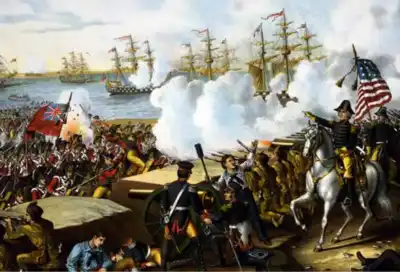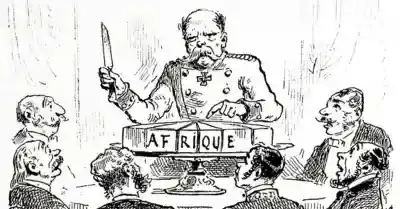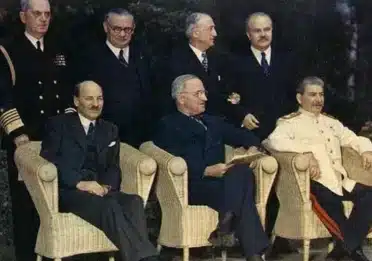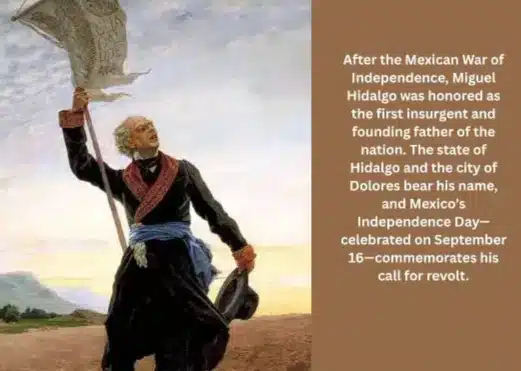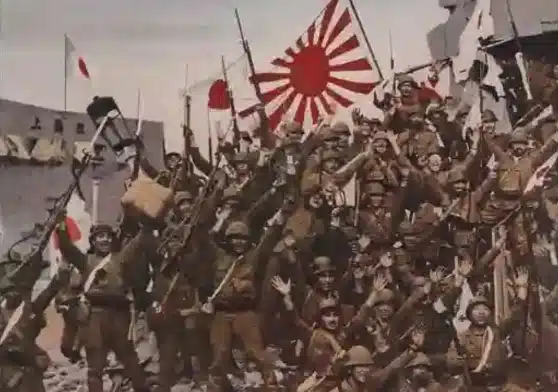Carter Doctrine: The Intersection of Oil and Military Power
The Carter Doctrine, announced by President Jimmy Carter in his State of the Union Address on January 23, 1980, was not merely a Cold War policy shift—it was the culmination of decades of U.S. strategy to control the ‘International Oil Highway,’ the lifeline of global energy flowing through the Persian Gulf. The doctrine emerged as a direct response to the Soviet invasion of Afghanistan, which brought Moscow’s forces alarmingly close to the Strait of Hormuz, the world’s most critical oil chokepoint.
With Iran in revolutionary chaos and Soviet tanks just 300 miles from the Indian Ocean, President Carter declared that any threat to Gulf oil would be met with U.S. military force. This policy redefined America’s role as the ultimate security guarantor in the region, highlighted by the U.S. military presence in the Persian Gulf, which accounts for half of all U.S. combat forces worldwide.
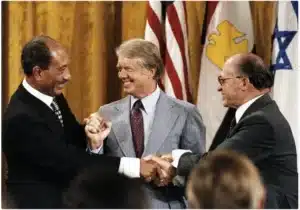
The roots of this doctrine run deep. Decades earlier, Franklin Delano Roosevelt (FDR) had countered British and Soviet efforts to encroach on Iran during World War II, defending its sovereignty to protect Allied interests. By 1943, his commitment to safeguard Saudi Arabia signaled a significant shift: Gulf oil had become a U.S. national security priority. Although relations between Iran and the U.S. later deteriorated and Russia maintained its influence in the region, it did not pose a direct threat to American dominance at that time, largely due to doctrines like Carter’s.
💻 Table of Contents:
- The Carter Doctrine: Addressing Foreign Policy Challenges
- How the Carter Doctrine Changed Middle East History
- The Implementation and Evolution of the Carter Doctrine
- The Carter Doctrine Related to Containment
- Carter Doctrine: Shaping U.S. Energy Policy Amid the Oil Crisis
- The Silent Partner: Israel Also Influenced the Carter Doctrine’s Strategy
- Carter Doctrine and al-Qaeda: A Connection to Anti-American Sentiment
- Global Reactions: How the World Responded to the Carter Doctrine
This article traces how the Carter Doctrine transformed the Persian Gulf into a permanent U.S. security zone, setting the stage for decades of intervention—from the Gulf Wars to today’s tensions with Iran. Beyond Cold War rivalry, it cemented the idea that whoever controls the “Oil Highway” controls the world’s economic fate—a reality that still shapes 21st-century power struggles.
The Carter Doctrine: Addressing Foreign Policy Challenges
The Truman and Eisenhower Doctrines set the stage, but Carter’s declaration marked the moment when oil, geopolitics, and military power fully converged. National Security Advisor Zbigniew Brzezinski cautioned against a Soviet-controlled “corridor” extending from Chittagong to Aden, while Henry Kissinger emphasized that losing the Gulf would mean losing the global economy.
In his State of the Union address on January 23, 1980, President Jimmy Carter articulated the urgent foreign policy challenges facing the United States, particularly in light of the Iran hostage crisis and the Soviet invasion of Afghanistan. Carter emphasized the plight of 50 Americans held hostage in Iran, branding the situation as an act of “terrorism and anarchy.” He also condemned the Soviet Union’s military intervention in Afghanistan, framing it as an attempt to subjugate a fiercely independent and deeply religious nation.
Carter’s address underscored the complexities of the international landscape, particularly in the Middle East and Central Asia, while also reflecting on domestic concerns such as energy independence and economic stability. His strong stance against Soviet aggression not only highlighted the principles that would come to define the Carter Doctrine but also marked a pivotal moment in U.S. foreign policy. This speech was particularly significant as it set the tone for Carter’s final year in office, revealing the challenges he faced, including the upcoming 1980 election and growing public dissatisfaction with his administration.
Carter emphasized the need to strengthen NATO to counter Soviet aggression and announced plans to deploy modernized nuclear forces in Europe as part of NATO’s “Dual-Track Decision.” This approach aimed to enhance deterrence while pursuing arms control negotiations with the Soviet Union. While rallying allies to support sanctions against the USSR, he faced challenges in maintaining full transatlantic unity, especially given the historical context of the Warsaw Pact’s military alignment against NATO. This underscored NATO’s key role in U.S. Cold War strategy amid rising tensions.
How the Carter Doctrine Changed Middle East History
The Carter Doctrine marked a seismic shift in U.S. foreign policy, transforming the Middle East into a permanent theater of American military power. Before 1979, the U.S. had avoided direct intervention in the region, focusing instead on Cold War flashpoints like Korea and Vietnam. But the Soviet invasion of Afghanistan—coupled with Iran’s revolution—forced Washington to openly declare the Persian Gulf a vital national interest, backed by the threat of military force.
This strategic shift was the direct successor to Carter’s other major foreign policy achievement: the Camp David Accords. The 1978 agreement, which neutralized Egypt as a military threat to Israel, successfully fractured the Arab front but simultaneously created a new strategic vacuum. The subsequent Carter Doctrine addressed this emerging instability, ensuring that the diplomatic foundation laid at Camp David would be secured by a new, explicit U.S. military guarantee for the Persian Gulf, thereby linking Middle Eastern peace to global energy security.
This doctrine not only stopped Soviet expansion but also filled the gap left by Britain’s withdrawal after WWII. The Suez Crisis showed Europe’s decline, leading the U.S. to become the region’s security protector and setting up CENTCOM, which later led to wars in Iraq and Afghanistan. The doctrine also redefined America’s alliance system, most notably with Israel. While U.S. support for Israel had grown after the 1967 Six-Day War, Carter’s policy cemented the Middle East as a strategic battleground where oil and ideology intersected.
By tying Gulf oil security to Cold War victory, the doctrine set a precedent for decades of interventionism—from Reagan’s Lebanon deployment to the post-9/11 wars. Its legacy endures today: the Strait of Hormuz remains militarized, Iran is ringed by U.S. bases, and Washington’s “oil for security” bargain with Gulf states continues to shape global energy politics. The Carter Doctrine didn’t just respond to 1979’s crises; it rewrote the rules of Middle East power for generations.
The Implementation and Evolution of the Carter Doctrine
The Carter Doctrine was quickly criticized for not having enough military support. This led the Carter administration to quickly create the Rapid Deployment Force (later CENTCOM) and increase the U.S. naval presence in the Persian Gulf. While these measures strengthened regional deterrence, full implementation fell to Carter’s successor, Ronald Reagan, who introduced the “Reagan Corollary” in 1981. This extension pledged direct U.S. intervention to protect Saudi Arabia during the Iran-Iraq War, shifting focus from external threats to internal stability—a policy that later underpinned Operation Desert Storm.
Rooted in Cold War containment strategies like the Truman and Nixon Doctrines, the Carter Doctrine formalized oil security as a core U.S. interest, intertwining energy access with military strategy. Its legacy endured through decades of Middle Eastern conflicts, from the Gulf Wars to post-9/11 interventions, while reshaping alliances with regional players like Israel and Gulf states. The doctrine’s emphasis on preemptive force established a template for U.S. hegemony in the region, despite risks of prolonged entanglements.
💻 Table of Contents:
- The Cold War: Collapse of Soviet Communist Empire & American Triumph
- Warsaw Pact: The Forgotten Soviet Military Alliance
- Landmarks in History: Iran’s First Encounter with Foreign Occupation
Though Carter left office before seeing his doctrine fully enacted, its principles became a cornerstone of American foreign policy. The Reagan Corollary’s expansion showed how adaptable the doctrine was, strengthening Washington’s position as the region’s security protector. Today, the Carter Doctrine’s influence persists, underscoring how 20th-century energy geopolitics continue to shape 21st-century military and economic strategies in the Middle East.
The Carter Doctrine Related to Containment
The Carter Doctrine, introduced by President Jimmy Carter in 1980, directly aligned with the strategy of containment, which was originally proposed by diplomat George Kennan in 1946. Containment sought to counter Soviet expansion through political, economic, and military means without resorting to direct military conflict. It encompasses a set of beliefs that prioritize a strong national defense, a robust military presence, and a proactive approach to foreign policy. By declaring that the United States would use military force to protect its interests in the Persian Gulf, the doctrine emphasized the necessity of a strong defense posture in the face of geopolitical threats, particularly following the Soviet invasion of Afghanistan.
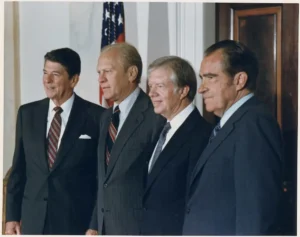
The Carter Doctrine emphasized the U.S. commitment to containment and highlighted the need for strategic action to protect national interests. This alignment with conservative values prioritized military readiness and an assertive foreign policy to counter Soviet ambitions. This relationship between the Carter Doctrine and containment illustrates how domestic political ideologies can shape foreign policy decisions during critical historical moments, reinforcing the U.S. role as a global power.
Carter Doctrine: Shaping U.S. Energy Policy Amid the Oil Crisis
To understand the Carter Doctrine, we need to consider the economic impact of the 1970s oil crisis, especially the 1973 Arab-Israeli War. During this time, OPEC countries imposed an oil embargo on the U.S. in response to America’s support for Israel in the conflict. The embargo led to significant inflation and instability in the U.S. economy, heightening concerns about energy security and the country’s dependence on foreign oil. Consequently, U.S. foreign policy shifted to prioritize the protection of American interests in the Persian Gulf. Thus, the economic turmoil of that era directly influenced the strategic military and geopolitical considerations that shaped the Carter Doctrine.
Besides, the Iranian Revolution of 1979 and the subsequent Iraq-Iran War significantly influenced U.S. energy policy and led to the formulation of the Carter Doctrine, which emphasized a militarized response to protect American interests in the Persian Gulf. The revolution triggered a second oil crisis, starting with the price of crude oil rising to $39.50 per barrel over the next 12 months, marking its all-time highest real price until March 3, 2008.
This economic turmoil underscored the critical vulnerability of U.S. dependence on Gulf oil, compelling President Carter to adopt a doctrine that aimed to secure oil supplies through military means. The drastic measures taken by the Federal Reserve to combat inflation, including interest rate hikes, highlighted how deeply entrenched Gulf oil was in America’s economic framework, prompting a need for a strategic approach to safeguard this vital resource.
In response to the instability caused by the Iranian Revolution and the Iraq-Iran War, which severely restricted Iranian oil production, nations began to diversify their energy sources. The crisis catalyzed efforts to develop alternative oil supplies from regions like Alaska, the Gulf of Mexico, and the North Sea. Additionally, countries reliant on Middle Eastern oil sought to reduce their dependence by exploring other fuel sources, such as coal, nuclear power, and natural gas. This shift not only aimed to mitigate the impacts of fluctuating oil prices but also represented a long-term strategic pivot in energy policy, moving away from vulnerability to fossil fuel supply disruptions.
The Silent Partner: Israel Also Influenced the Carter Doctrine’s Strategy
While framed as a Cold War policy, the Carter Doctrine also advanced a crucial U.S. interest: supporting American grand strategy. Since Truman recognized Israel on May 14, 1948, the U.S. has guaranteed its survival. During the Cold War, Israel was a key ally in limiting Soviet influence in the region. In the post–Cold War era, the U.S. continues to support Israel’s security through significant assistance, ensuring its Qualitative Military Edge (QME) and promoting a stable regional framework with its neighbors. After the 1973 Yom Kippur War, where Arab states weaponized oil against Israel’s allies, Washington recognized that Gulf dominance meant protecting the Jewish state’s survival.
Israel had relied on Iranian oil to meet a significant portion of its energy needs during the 1960s and 1970s. But after the Iranian Revolution in 1979 cut off oil supplies to Israel, the urgency for the U.S. to secure alternative routes and maintain energy security for its ally increased. The Carter Doctrine’s naval buildup near Hormuz thus served dual purposes: it boxed out the Soviets while ensuring oil continued to flow to Haifa’s pipelines, thereby cementing the U.S.-Israel alliance as a hidden pillar of Gulf strategy.
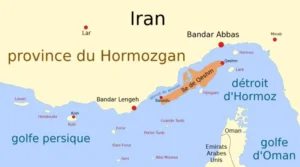
In a contemporary context, on June 15, 2025, reports indicated that Israel’s largest oil refinery—the Bazan Group complex in Haifa—sustained damage from Iranian attacks on conduit piping, necessitating the shutdown of some facilities. This incident underscores the persistent threats facing Israel’s energy infrastructure and the relevance of maintaining secure oil routes, which were central to the U.S. strategy initiated during the Cold War. The ongoing need for a U.S. naval presence in the region reflects the enduring significance of the Carter Doctrine in safeguarding both American and Israeli interests, highlighting its historical roots in Gulf strategy.
Carter Doctrine and al-Qaeda: A Connection to Anti-American Sentiment
The Carter Doctrine’s legacy includes an often-overlooked consequence: the radicalization fueled by permanent U.S. bases in Muslim lands. The Carter Doctrine legitimized American military presence in the region, which, over time, came to be perceived by figures like Osama bin Laden as a means of supporting authoritarian regimes that favored U.S. oil companies. Bin Laden argued that America’s involvement was solely about securing oil, portraying U.S. troops in Muslim and Arab nations as enablers of dictators who compromised the sovereignty and welfare of their people.
This connection between the Carter Doctrine and al-Qaeda’s anti-American jihad highlights a narrative where U.S. foreign policy is seen as exploitative, fueling resentment and extremism. Bin Laden’s assertions, particularly in his Al Jazeera interviews, underscore his belief that the U.S. presence in the Middle East served only to protect its economic interests, thus legitimizing his call for jihad against American forces. Thus, the Carter Doctrine not only shaped U.S. foreign policy but also contributed to the ideologies that motivated al-Qaeda’s militant opposition.
Global Reactions: How the World Responded to the Carter Doctrine
The Carter Doctrine drew sharp reactions from global powers, particularly from the Soviet Union and non-aligned nations. Moscow condemned it as American imperialism, using it to justify their continued presence in Afghanistan while rallying allies like Syria and South Yemen against U.S. influence. Meanwhile, European NATO allies expressed cautious support but hesitated to fully endorse sanctions, fearing disruptions to their own energy supplies and trade with the USSR. France and West Germany, for instance, prioritized peace over confrontation, revealing early cracks in Western unity that would later widen during Reagan’s tenure.
Today, the biggest challenge to the Carter Doctrine is Iran’s nuclear ambitions, which test its core principle of Gulf security and raise concerns about empowering regional proxies. While U.S. or Israeli military action could spike oil prices, the greater threat lies in Iran’s ability to strengthen its influence across the region.
The doctrine’s original focus on external threats has shifted to confront Tehran’s network of non-state allies, blending military deterrence with complex asymmetric challenges. Thus, the Carter Doctrine faces a new and multifaceted test in navigating the intricate landscape of Middle Eastern geopolitics.
China, then in the early stages of reform, watched carefully—its muted response masking a strategic calculation. By tacitly supporting U.S. containment of the USSR (while quietly arming Afghan mujahideen), Beijing exploited the Carter Doctrine to weaken its Soviet rival without direct entanglement. This chessboard of global reactions proved that while the doctrine was a U.S. policy, its ripple effects reshaped alliances from the Persian Gulf to the Himalayas, setting patterns for 21st-century multipolar competition.
Conclusion: The Enduring Legacy of Energy Geopolitics
The Carter Doctrine represents more than a Cold War policy—it encapsulates the fundamental truth that energy security remains the bedrock of global power. By anchoring U.S. military strategy to oil reserves, it created a template for resource-driven intervention that outlasted the Soviet Union itself. Today, as renewable energy transitions gain momentum, the doctrine’s core premise faces new challenges, yet its lessons about the intersection of economics and security remain alarmingly relevant.
Ultimately, the doctrine’s greatest impact may be its unintended consequences: the destabilizing cycle of militarization and resistance it unleashed across the Middle East. While designed to ensure stability, its legacy reminds us that force alone cannot secure prosperity—a cautionary tale for an era where climate change and cyber warfare are rewriting the rules of resource competition. The Carter Doctrine didn’t just defend oil; it revealed how deeply energy shapes destiny, for nations and the world alike.

